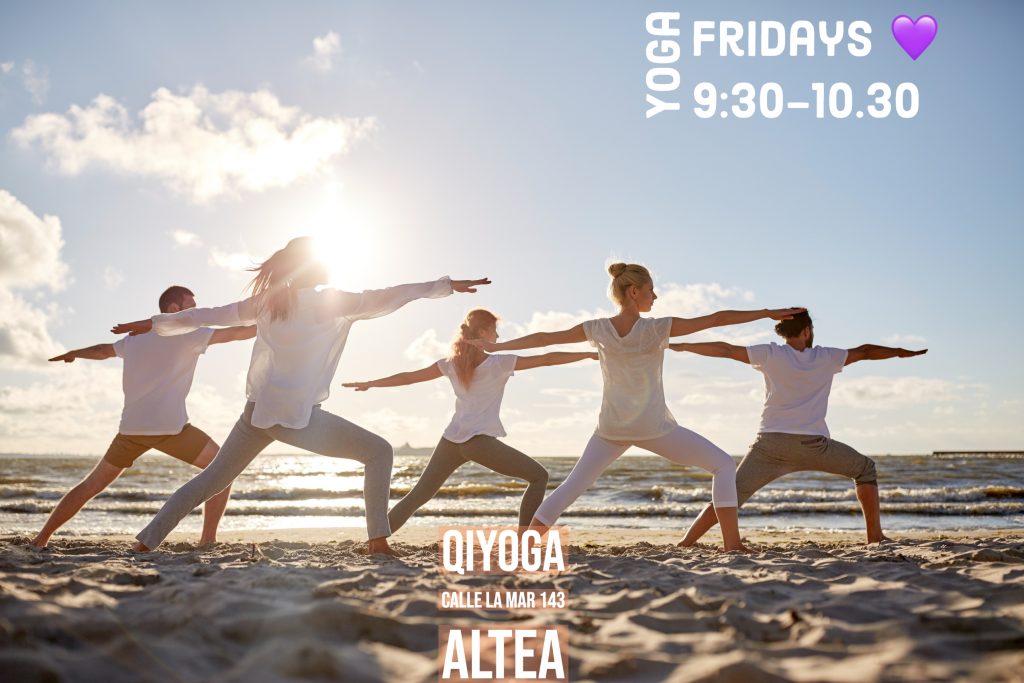We are back to the mat, people! Group yoga classes are back, and I am truly thrilled to get back to teaching you the finer points of Hatha yoga.

A year has now passed since I last gave a group class. It has been a strange year, to say the least. The pandemic (which I know we are all bored of talking about) has exposed rifts both in our inner lives and in our societies. We just had to hunker down and do our best. I wasn’t on my best form for a few months there, so I felt like I didn’t have the energy to give as a teacher. I stuck with my massages, for sure, but yoga became about my personal practice and about teaching private yoga classes at SHA Wellness Clinic.
Luckily, I kept my skills fresh teaching yoga at this world-famous wellness hotel. There, I teach yoga, meditation, mindfulness and pranayama (breath work) and I truly love it. They are private classes, and so have a different feel than group classes. Group classes have their own special vibe, and I am so excited to get back to teaching them.
Group yoga classes are social
I once read a very interesting interview with an Indian yoga teacher from a very distinguished lineage. He was giving a seminar in Sweden and the interviewer stole (borrowed?) a few minutes of his time.
When asked about the differences between teaching yoga in India and teaching yoga in the West, he mentioned the predominance of group classes in the West. Traditional Indian teaching would have been one-to-one, guru to student. Outside of India, that tradition has been lost, or substituted. The teacher mentioned that in Western countries, loneliness is a major social and psychological problem and that group yoga classes play an important role in alleviating this loneliness.
Nice people go to yoga class
In yoga classes, we often meet like-minded people and the environment of yoga encourages a deeper kind of sharing and more intimate conversation that might feel out of place on a pub night out, for example.
Alone in company
I have personally experienced the extremely common situation of being really into personal growth whilst in a relationship with someone who is not. That provoked in me the deepest feelings of loneliness as I felt invalidated when trying to talk about issues that really mattered to me. I was lucky that I worked in the field of wellness and preventative medicine and that gave me an outlet. (Nevertheless, when you’re the teacher or therapist, you’re not expected to share so much as the role of the teacher is to hold space for others. But, that conversation is worthy of a whole other post! )
Entrainment
Have you ever seen those videos of metronomes spontaneously synchronising? There is a tendency for energy waves to fall into patterns, and this is observable in many different area. Birds flying in a swirling flock, feedback on a microphone…and humans meditating. Yep, the phenomenon is called “entrainment” and it happens.
Basically, when you do yoga or meditate, you reduce the frequency and amplitude of your brainwaves. SMB (slow-medium Beta) is the frequency associated with meditative movement modalities like yoga, tai chi or chi gong. If you are practising alone, your brainwaves will relax, but if you are with people who are doing the same practice, it seems like everyone’s brainwaves synchronise and you get to the happy place a little more easily. Also, when you are in the presence of the highly trained and experienced teacher, your brainwaves entrain to theirs. Fascinating to think about, no?
Come to class!
I will start by offering one class per week and take it from there. I am super busy, as is everyone, so I want to make this work.
Day: Fridays
Dates: 18-02-2022 until the end of June.
Time: 9.30-10.30
Studio: Qiyoga
Address: Calle la Mar 143, Altea
Price: 30€/month




 We are born and the first thing we do is inhale. The last thing we do when we leave this mortal coil is exhale. Everything that comes in between is called a life.
We are born and the first thing we do is inhale. The last thing we do when we leave this mortal coil is exhale. Everything that comes in between is called a life.